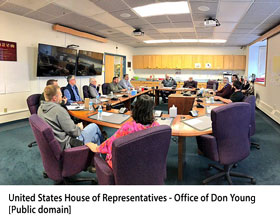Making Decisions
Different groups reach decisions in different ways. Understanding how a given group decides will help you function effectively within it.
Decision Making
The most common decision-making approaches appear below. Sometimes different methods occur simultaneously. As you will see, each approach has pros and cons.
Method of Deciding |
Pros |
Cons |
| Authority Rule: The group discusses issues and may make recommendations. However, one authority figure—a leader or an invited expert—makes the decision. | This method is efficient. | Members may feel they don’t get a say. |
| Minority Rule: A vocal or powerful minority makes the decision. (Sometimes the minority is a subcommittee delegated to take on the issue.) | Even minority interests can be heard and have power. | This method may leave the majority feeling left out. |
| Majority Rule: The group votes, and whatever option crosses a threshold of votes wins. | This approach is fair but still efficient. | Those in the minority may feel reluctant to cooperate. |
| Consensus Rule: All group members agree to support a solution even though some may have reservations. | Group members feel included and valued. | This method may take time and discussion. |
Contributing to Group Decision Making

Even if you are not the ultimate decision maker within a group, you can contribute to the decision and help move the process along. Here are some tips.
Know the decision-making style of the group.
Remember the five conflict-resolution strategies: assert, defer, cooperate, compromise, and compete.
Help the group state a common goal, which puts members on the path to cooperation.
Recognize and stop groupthink so that alternative solutions and opposing ideas are taken into consideration.
Recognize and set aside emotional thinking—your own and others’.
Help the group avoid common pitfalls to effective decision making.
Avoiding Pitfalls
Well-run groups make effective decisions, following a clear agenda and sharing critical information among group members. Poorly run groups are plagued with a variety of pitfalls. Learn to recognize and combat the following problems:
Shirking responsibility occurs when group members opt out of decision making, remaining silent or deferring to others rather than engaging the issue.
Proceeding in ignorance happens when group members do not have critical information but make decisions anyway.
Rushing to judgment occurs when the group latches onto a specific idea, ignores all alternatives, and talks up the value of the selected option.
Trivializing means focusing on minor issues in order to avoid major ones, often spending the most time addressing the least important topics.
Sending good money after bad happens when a group sticks to a bad plan simply because they have invested so much time and energy into it already.
Using confirmation bias means admitting only evidence that already supports one's position.
Creating a cult of personality occurs when one or two people in the group exert all of the influence and everyone else simply follows along.
Decision Making in Dispersed Groups
When group members are physically dispersed, they can use web conferencing to meet. They can also use an approach called the Delphi Method, which works well to allow anonymous and lengthy deliberation from a dispersed group of experts. Here's a simplified version of the Delphi Method:
Identify a problem to solve or an issue to discuss.
Develop a survey that asks for experts to offer opinions about the issue.
Send the survey to the experts and request responses within a given time frame.
Compile the survey results and share them with the team, outlining trends.
Seek consensus among participants or gather objections and create another survey to address those issues.
Continue the process until you can reach a consensus.